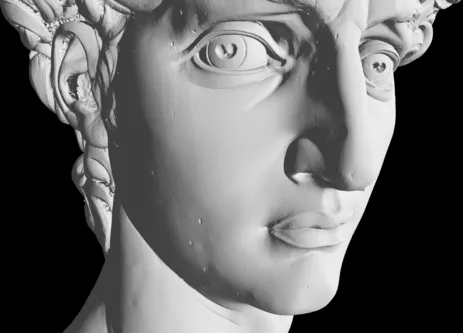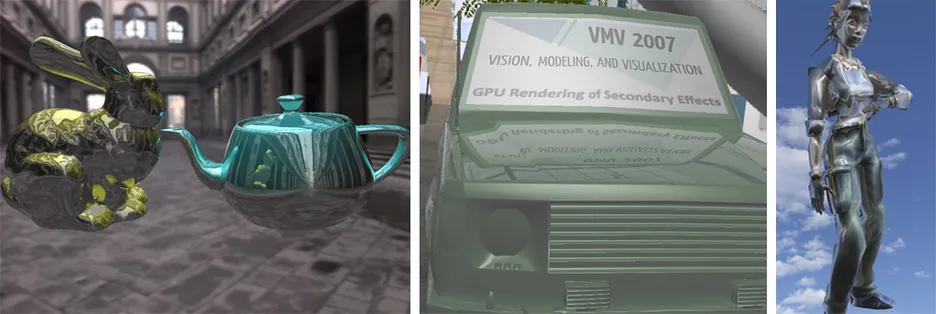Voxel- and Sample-based Rendering
Over the last years, sample-based and especially voxel representations have more and more emerged as an alternative as well as extension to conventional triangle-based rendering. In contrast to the de facto standard for model representation in computer graphics - storing a surface as a set of vertices with additional connectivity information such as an index list - these data structures aim at storing information at discrete sample points, most commonly on a regular 2D or 3D grid. In combination with hierarchical data structures such as sparse octrees, they can then be used for level-of-detail based rendering and secondary effects on programmable graphics hardware.
This research project focuses on alternative, sample-based surface representations for rendering as well as secondary effects and simulation.
Scalable rendering for very large meshes

The David statue, consisting of about 1 billion triangles, is rendered at interactive framerates. Our technique uses the rasterizer exclusively to allow for high-quality, anti-aliased rendering and takes advantage of a compact, voxel-based level-of-detail simplification. We show how our approach unifies streaming, occlusion culling, and level-of-detail into a single rasterization based pipeline.
Publication page: Scalable Rendering for Very Large Meshes
Hybrid Sample-based Surface Rendering


Left: Close-up of the David statue consisting of about 1 billion triangles. The image is rendered in less than 30ms onto a 1920x1080 viewport using a hybrid method of rasterization and ray-casting on a sample-based data structure.
Right: color-coding of the used rendering method: rasterization (red) and ray-casting (green).
Publication page: Hybrid Sample-based Surface Rendering
GPU-Aware Hybrid Terrain Rendering

A 56km x 85km digital terrain field is rendered on a 1920 x 1080 view port using rasterization (green boxes) and ray-casting (red boxes) simultaneously in every frame. The spatial resolution of the terrain and the texture is 1m and 12.5cm, respectively. Our hybrid rendering pipeline achieves speed-ups between a factor of 2 and 4 compared to pure rasterization or ray-casting.
Publication page: GPU-Aware Hybrid Terrain Rendering
Sample-based Surface Coloring

Resolution-independent sample-based appearance modeling of polygonal surfaces, from left to right: fine color details are painted on an adaptive triangle surface, particle-based color advection, normal modulation, decal painting using a surface-aligned brush. All effects were generated at update rates of 100 fps and higher on recent GPUs.
Publication page: Sample-based Surface Coloring
GPU-Rendering of Secondary Effects

Secondary effects rendered with our approach, from left to right: reflections on a nearly planar surface, shadows of a complex tree, reflections on complex objects.
Publication page: GPU Rendering of Secondary Effects
GPU Ray-Casting for Scalable Terrain Rendering

A textured DEM of Vorarlberg, Austria (56 km × 85 km) is rendered on a 1920 × 1080 view port using our method. The spatial resolution of the DEM and the texture is 1 m and 12.5 cm, respectively. Even though we render to a 2 megapixel view port, an average frame rate of about 30 fps is achieved at a geometric screen-space error of below one pixel.
Publication page: GPU Ray-Casting for Scalable Terrain Rendering